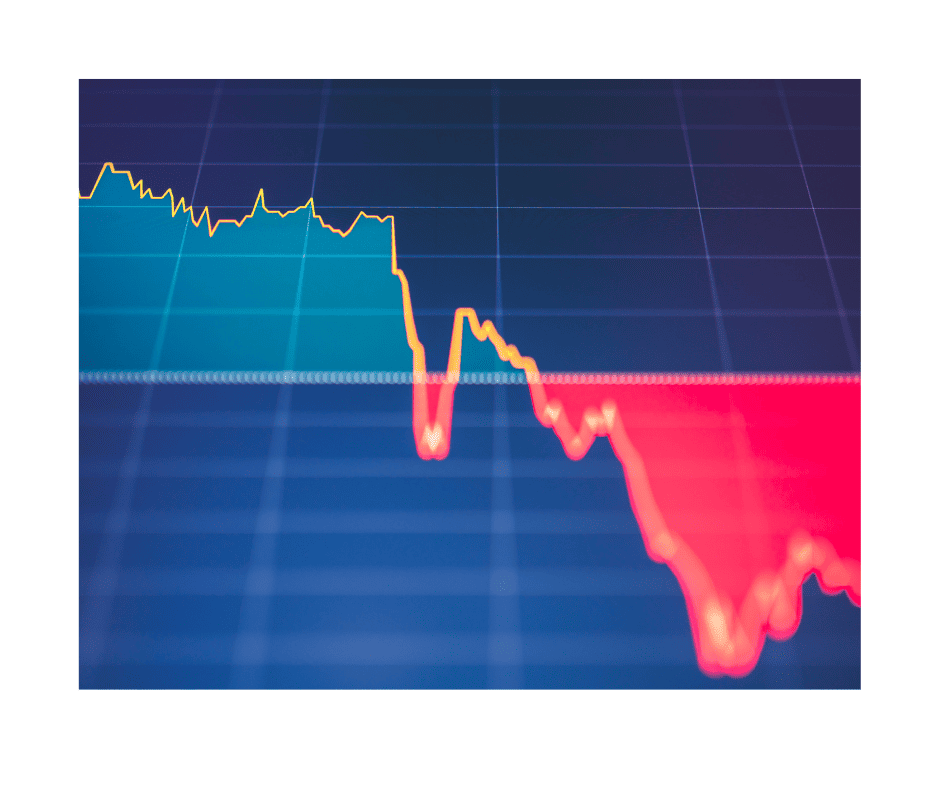Numerous economic indicators can move markets in Forex trading, and the CPI is one of them.
In this article, I’ll detail the relationship between the CPI and Forex prices, helping prepare you to trade this vital index.
What is the CPI?
The Consumer Price Index (CPI) is more than just a simple economic indicator; it’s a comprehensive measure reflecting the average change over time in the prices paid by urban consumers for a basket of goods and services.
Let’s examine the details of its components, calculation, and significance in economic analysis.
Components of CPI:
- Basket of Goods and Services: This basket includes various items such as food, clothing, shelter, fuels, transportation fares, charges for doctors and dentists, and prices of other goods and services that people buy for day-to-day living.
- All the goods and services included are divided into several categories, each with a different weight in the overall index calculation.
- Geographical Coverage: This covers expenditures by nearly all residents of urban or metropolitan areas in a country, including professionals, self-employed, poor, unemployed, and retired people, as well as wage earners and clerical workers.
- This broad coverage makes it a comprehensive indicator of the general price level.
- Data Collection: Prices of thousands of items are collected each month in cities across the country from places like supermarkets, hospitals, filling stations, and online retailers.
- Index Calculation: This index is calculated by taking price changes for each item in the predetermined basket of goods and averaging them. Changes are usually relative to a base year, simplifying comparing figures over time.

- Adjustments for Seasonal Variations: Seasonal adjustments are often made to account for predictable seasonal price fluctuations, such as heating costs in the winter or gasoline prices in the summer.
- Inflation Measurement: This is the most widely used measure of inflation and is considered an indicator of the effectiveness of government economic policy. It provides a guide for adjusting income payments and wages for changes in the cost of living.
- Cost of Living Adjustments (COLAs): Commonly, people use adjustments to increase social security and supplemental security income, military and Federal Civil Service retirement benefits, and to become eligible for food stamps and school lunch programs.
- Policy Making: Policymakers, economists, and central banks use it to guide economic decisions, including interest rate adjustments and monetary policies.
The CPI provides insights into an economy’s changing cost of living and inflation trends.
The measure used for economic policy and personal finance adjustments has limitations and nuances that should be recognized when interpreting it.
The Connection Between Forex Trading and the CPI
The CPI, as a measure of inflation, can impact the value of a currency.
Let’s explore how this connection plays out.
Inflation and Currency Value: It reflects inflation rates, which directly influence the value of a currency. High readings, indicating rising inflation, often result in currency depreciation.
- This depreciation occurs because inflation erodes the currency’s purchasing power, making it less desirable to investors and traders.
- In contrast, a low or moderate report, signaling controlled inflation, can enhance a currency’s appeal and potentially lead to its appreciation in value.
Consumer Spending and Economic Growth: Inflation also impacts consumer spending.
- High inflation can lead to reduced consumer spending as the cost of living increases. This decrease in spending can slow economic growth, further affecting the currency’s strength.
- Conversely, manageable inflation can stimulate spending, contributing to economic growth and potentially bolstering the currency’s value.
Central Bank Responses and Interest Rate Decisions
Policy Adjustments: Central banks use inflation data as a critical input in their monetary policy decisions.
- A rising index indicates that a central bank may raise interest rates to counteract high inflation.
- Higher interest rates can attract foreign investment, increasing demand for the currency and leading to its appreciation.
- Conversely, low inflation or deflation may prompt a central bank to lower interest rates or implement quantitative easing, potentially leading to currency depreciation.

Market Anticipation: Forex markets often react to the actual figures and anticipate central bank actions in response to those figures.
- Traders may adjust their positions in anticipation of interest rate changes, leading to currency movements before the central bank officially acts.
How International Trade Impacts Forex Trading and the CPI
Import and Export Dynamics: The CPI can influence a country’s trade balance.
- A high report may weaken a currency, making exports cheaper and more competitive internationally, potentially improving the trade balance. However, it also makes imports more expensive, further fueling inflation.
- A lower report can strengthen a currency, making exports more expensive and less competitive, but imports become cheaper, which can help control domestic inflation.
Cross-Border Investment Flows: Changes in a country’s CPI can affect foreign investment flows.
Investors and multinational companies consider inflation rates when making investment decisions.
- High inflation can deter foreign investment, leading to less demand for the currency, while controlled inflation can encourage investment, boosting the currency’s strength.
Forex Trading and the CPI Surprises
Expected vs. Unexpected Data: The Forex market’s reaction to data often hinges on whether the data meets, exceeds, or falls short of market expectations.
- A figure that significantly deviates from forecasts can cause sharp currency movements.
- For example, a higher-than-expected report can trigger a currency sell-off as traders anticipate inflationary pressures. At the same time, a lower-than-expected report can lead to buying interest.
Long-Term Trends vs. Short-Term Fluctuations: Although announcements may cause short-term reactions, sustained patterns in CPI data also influence long-term trends in a currency’s value.
- Consistently high or low readings over several months or quarters can establish a trend that shapes the longer-term perception of a currency’s strength or weakness.

Forex Trading and the CPI are complementary since this indicator of inflation impacts all currency markets.
It influences currency values through its impact on inflation, central bank policies, international trade dynamics, and market sentiment.
By closely monitoring the data and understanding its implications, Forex traders can better navigate the complexities of the currency market.
Forex Trading and the CPI Strategies Based on Data
Integrating CPI data into trading strategies can significantly improve decision-making in the Forex market.
By understanding how the index influences currency values, traders can adopt various tactics to capitalize on these movements.
Below are expanded strategies that Forex traders can employ based on the data:
Anticipating Interest Rate Changes
Preemptive Positioning: Traders should closely monitor data releases and central bank commentary to predict possible interest rate changes.
- If the data consistently shows rising inflation, traders might anticipate a rate hike and buy the currency in advance.
- Conversely, if the data indicates low inflation, traders may expect a rate cut and consider selling the currency.
Scenario Analysis: Develop scenarios based on potential outcomes and associated central bank actions.
- If you expect upcoming data to be high, prepare for scenarios where the central bank might raise, lower, or maintain interest rates and plan trades accordingly.
Long and Short Positions Based on Forecasts
Forecast Trading: Traders can take positions based on anticipated CPI data.
- If the forecast is for a higher report, you might take long positions on the currency, expecting it to strengthen.
- Conversely, short positions might be more favorable if a lower number is forecasted.
Hedging Strategies: Utilize hedging techniques to mitigate risk.
- If you need clarification on the outcome, you can take long and short positions in different but correlated currency pairs, balancing the risk if the data leads to unexpected market movements.

Emerging vs. Developed Markets: Consider the differing impacts of CPI data in emerging markets versus developed economies.
- Emerging markets might react more strongly to CPI changes, offering opportunities for higher returns but with increased risk.
Technical Analysis Post-CPI Release
Trend Identification: After a data release, use technical analysis to identify emerging trends or reversals.
- Indicators like Moving Averages, RSI, or Bollinger Bands can be beneficial in highlighting these trends.
Support and Resistance Levels: Identify critical Support and Resistance levels post-CPI announcement.
- These levels can offer entry and exit points for trades, as currencies often react strongly to unexpected data.
Incorporating Inflation Data into Fundamental Analysis
Economic Outlook: Combine data with other economic indicators for a comprehensive view.
- For example, if CPI data shows increasing inflation and employment figures are also strong, it might signal a robust economy, favoring a bullish stance on the currency.
Sector-Specific Analysis: Consider the impact of inflation data on specific economic sectors and how that might influence currency values.
- For example, high inflation might hurt consumer discretionary sectors but benefit commodities, which can affect currencies differently.
Forex Trading and the CPI Impact on Major Currencies
To further illustrate how the Consumer Price Index impacts Forex trading, let’s delve into more detailed case studies focusing on major currencies such as the U.S. Dollar (USD), Euro (EUR), and Japanese Yen (JPY).
These examples demonstrate how inflation data can influence these currencies in different economic contexts.
U.S. Dollar (USD) and CPI
Federal Reserve’s Reaction: The U.S. Federal Reserve often adjusts its monetary policy based on inflation data.
- A rising report typically signals higher inflation, prompting the Fed to consider raising interest rates.
- This potential for higher rates can strengthen the USD as higher rates attract foreign investments seeking higher returns.
Global Benchmark Status: The USD is a benchmark currency. Therefore, its data doesn’t just affect the U.S. market but has broader implications for international trade and investment flows.
- High U.S. inflation might lead to concerns about global economic stability, affecting not just the USD but other currencies, too.
Historical Trends: Significant deviations in the U.S. from market expectations have led to sharp movements in Forex markets, particularly in USD-paired currencies.
- These movements are immediate reactions and can set the tone for medium-term trends in the USD’s value.
Euro (EUR) and CPI
European Central Bank (ECB) Policies: The ECB closely monitors the Eurozone’s CPI as a critical indicator for its monetary policy.
- High inflation in the Eurozone can strengthen the Euro if the ECB signals a tightening monetary policy.
- Conversely, low inflation or deflation may prompt the ECB to adopt an accommodative policy stance, potentially weakening the Euro.

Diverse Economies within the Eurozone: The Eurozone comprises multiple economies with varying inflation rates.
- Thus, the overall Eurozone index is a weighted average, which can sometimes mask regional disparities.
- For a more subtle understanding, you must be mindful of this and consider individual country data, especially from larger economies like Germany and France.
Euro’s Sensitivity to CPI Divergences: The Euro is susceptible to divergences between the actual number and market expectations.
- Unexpectedly high or low readings can cause significant volatility in EUR trading pairs.
Japanese Yen (JPY) and CPI
Japan’s Unique Economic Context: Japan has battled deflation for many years, making its data a crucial indicator for Yen traders.
- In periods where Japan shows signs of moving away from deflation, even slight increases in inflation can lead to a strengthening Yen.
- Bank of Japan’s (BoJ) Reaction: The BoJ has historically been aggressive in its monetary policy to combat deflation. Any indication of rising inflation through the CPI could signal a shift in this policy, impacting the value of the Yen.
- For instance, if the index indicates rising inflation, the market may speculate on reducing monetary stimulus, which could strengthen the Yen.
Safe-Haven Currency Dynamics: The Yen is often considered a safe-haven currency.
- In times of global economic uncertainty, the Yen might strengthen even if inflation is low as investors seek stability. This aspect adds an extra layer of complexity when interpreting data for the JPY.

These case studies highlight that the impact of CPI data on major currencies is multifaceted and deeply intertwined with each country’s unique economic context, central bank policies, and global economic dynamics.
Forex traders must interpret data in isolation and as part of a broader economic picture.
Conclusion
By understanding and anticipating the effects of CPI data on currency values, you can make more informed decisions, aligning your strategies with economic trends.
As with any trading strategy, staying updated with the latest economic reports and market analysis is crucial to navigate the Forex market effectively.
For you, mastering this relationship is critical to achieving success in the ever-evolving world of Forex trading.
What’s the Next Step?
Select your favorite chart and correlate CPI announcements in the chart using an economic calendar.
In addition, look for opportunities to trade these announcements, combining them with a technical strategy.
If you need help developing an analysis process, you can use our Six Basics of Chart Analysis.
If you’re unfamiliar with the Six Basics, you can learn them here for free.
The “Six Basics” will give you a strong foundation in chart analysis, which you can incorporate with what you’ve learned about the Consumer Price Index.
In addition, when you get the “Six Basics,” you’ll also get Forex Forecast delivered to your inbox every Sunday.
Forex Forecast includes:
- Trade Ideas and Analysis
- I will show you the trade opportunities I’m watching using the Six Basics of Chart Analysis and Advanced Strategies.
- Case Studies from Around the Web
- Watch how applying the Six Basics worked on some of the best, most profitable trades.
- Trading Education Guides and Videos
- Want to learn most Six Basics techniques and advanced strategies?
- I produce Videos and Guides to help you learn and build a better trading practice.
- Links to New Articles
- I publish new articles on topics traders will want to know about every week, and you can find out when they post.
- Positionforex.com News
- Did something change at positionforex.com? Learn about it here first!
- Links to upcoming webinars
- Attend free webinars to improve your trading.
- And Much More
- Tools, Membership-only Videos, and more will be released in the Forex Forecast.
The best part – it’s completely free.

Frequently Asked Questions
What is the CPI and why is it Essential for Forex Trading?
The Consumer Price Index (CPI) measures the average change over time in the prices consumers pay for a basket of goods and services. It’s a key indicator of inflation in an economy.
This is crucial in Forex trading because it can influence a country’s currency value.
High readings often lead to high inflation, weakening a currency, while low readings indicate low inflation or deflation, potentially strengthening a currency.
How Does the CPI Affect the Forex Market?
The CPI affects the forex market primarily through its impact on inflation and central bank policies.
High inflation (high CPI) might prompt a country’s central bank to raise interest rates to control inflation, potentially strengthening the currency.
Conversely, low inflation (low CPI) might lead to lower interest rates, weakening the currency. Forex traders closely monitor CPI releases to anticipate these moves and adjust their trading strategies accordingly.
Can CPI Data be used to Predict Currency Trends?
Yes, CPI data can be used to predict currency trends to some extent.
Traders often use CPI as an indicator to forecast central bank actions regarding interest rates, which directly impact currency values. However, it’s important to note that many factors influence the forex market, and CPI is just one of them.
Therefore, traders should use CPI data with other economic indicators for more accurate predictions.
How Should You Respond to Unexpected CPI Data?
You should exercise caution and flexibility when responding to unexpected CPI data.
Typically, a higher-than-expected CPI might lead traders to speculate on potential interest rate hikes, possibly strengthening the currency.
At the same time, a lower-than-expected CPI might suggest interest rate cuts, weakening the currency.

